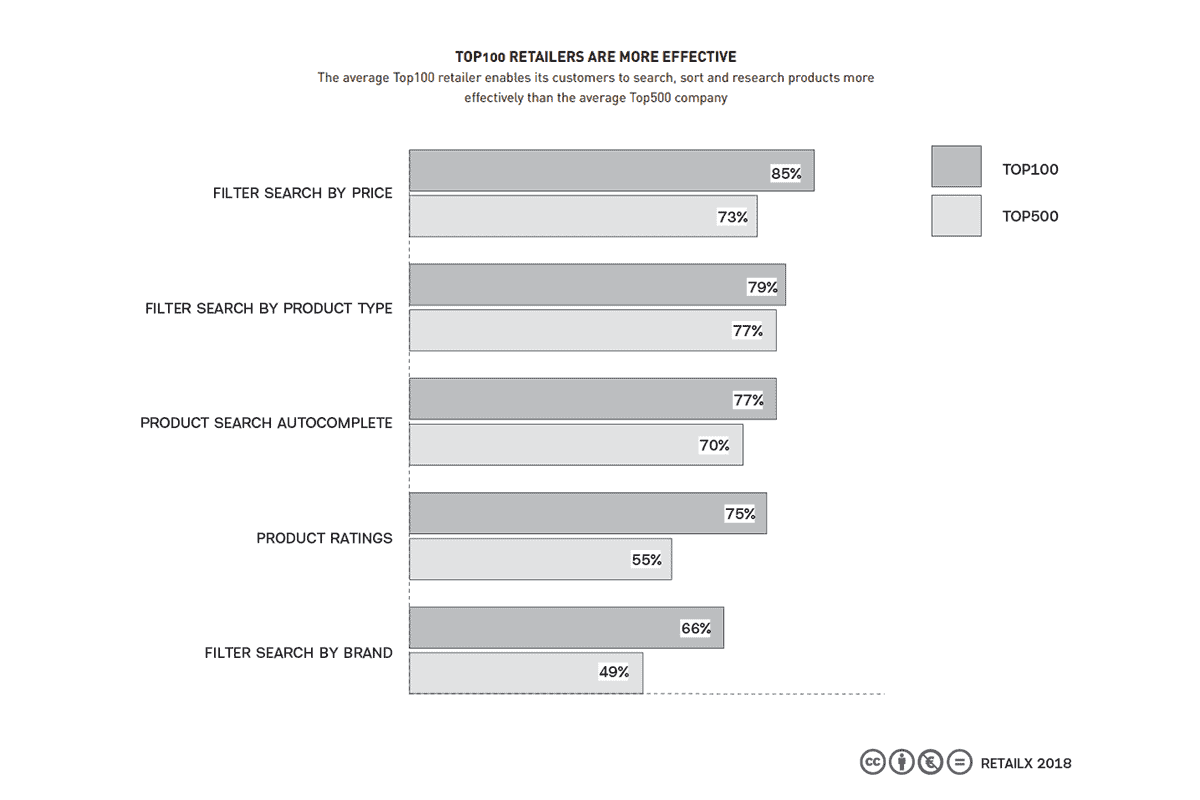Chloe Rigby considers the findings of a new report that analyses the product content strategies of IRUK Top100 retailers, while Martin Shaw illustrates IRUK Top500 findings in these areas
Product information, alongside ratings and reviews, play an important part in letting customers
know about the items they’re considering buying.
Metrics around these areas form an important part of the RetailX research that is the foundation of the IRUK Top500 The Customer Dimension. Customers must fully understand the products they’re looking at in order to make a buying decision, and to reduce the likelihood that they’ll need to return an item. Now, ecommerce content specialist Quill has carried out an in-depth study of the IRUK Top100, analysing how well the top retailers deploy information about the products they sell.
The report, Quill Quality Score 100: the state of content in ecommerce, suggests that while some ecommerce websites have successfully created websites that meet shoppers’ demands, many others are spending money to drive traffic to poor quality and non-optimised website pages.
Ed Bussey, founder and chief executive of Quill, suggests that “The biggest mistake that these etailers are making is overlooking the content at the conversion end of the purchase funnel – that is, the content that customers engage with right before they buy.” This primary content, he says, is defined as performance-led content that drives organic search engine traffic and, along with it, conversion rates and average order values.
The Quill study rated Mothercare, Ann Summers and Beaverbrooks most highly for their content strategies. It went on to assess different retail categories and found that department stores stood out, with Argos scoring particularly highly.
How the assessment was reached
Quill audited the websites of 100 major ecommerce and multichannel websites, as identified by the IRUK Top500 2017. It removed grocery vendors, replacing them with the next ranked nine retailers.
It then applied the Quill Quality Score to benchmark the quality of the primary content on those websites. The score includes an assessment of product descriptions, category descriptions, buying and how-to guides, all assessed on the quality of content.
Finally, the content experience was assessed for how well each site serves customers, helping them to make their way around the site. Scores ranged from the critical (0-4) to the good (8+). Criteria included spelling, grammar, readability and originality, alongside details and technical details and whether content was optimised for mobile.
The findings
Mothercare led the top 10, followed by Ann Summers, Beaverbrooks, Currys and Boots. Burton, B&Q, Halfords, bathstore and eBuyer.com completed the top 10. That said, Mothercare, with a score of 8.1, was the only retailer to be ranked as ‘good’ according to the Quill research metrics.
Department stores scored well in the research, with an overall score of 5.8 – where 0 to 4 is ‘low’, 4.1 to 6 is ‘weak’, 6.1 to 7.9 is ‘okay’, and 8+ is ‘good’.
Department stores were rated ‘okay’ for category descriptions (6.6) and guides (7.0) but had a ‘weak’ score (4.3) for the content experience. Argos scored highest in this analysis, while Debenhams scored poorly.
Home and DIY businesses scored an overall 5.4, with a high score for product descriptions (6.7) and a lower score (4.2) for the content experience. B&Q stood out in this analysis, while its sister company Screwfix scores were lower. Technology retailers scored an overall 5.4, with a high score of 7.9 on product descriptions but a low (3.6) score for content experience. Currys stood out here, while Game was marked down
Fashion retailers scored 4.7, including a 6.0 on category descriptions but a 3.7 on the content experience. Ann Summers scored highly, while H&M less so.
The study found that more than half (58%) of top brands produced substandard product descriptions, while 94% provided inadequate access to content via mobile. Common issues detected by Quill included duplicate content, with manufacturer’s sales text used wholesale – hitting the effectiveness of their SEO performance as a result.
Formatting often fell short of what Quill says is the “optimal” combination of prose and bullet points. Its own research says this optimal format makes 56% of customers more likely to buy a product, compared to 30% when only bullets are used, and 14% when only prose is used.
When it comes to content descriptions, 47% of brands have no copy at all on some category pages, a feature that Quill says is critical, while 18% have no guide content.
Conclusions
Quill concludes that “etailers have a long way to go in supplying a streamlined, persuasive online experience to customers”, with 79% of ecommerce websites audited having a sub-standard content offering that scores 6 or below.
“The biggest area for improvement is content experience: may retailers are failing to optimise their websites for mobile, or to make conversion-assisting guide content visible across the purchase journey.”







